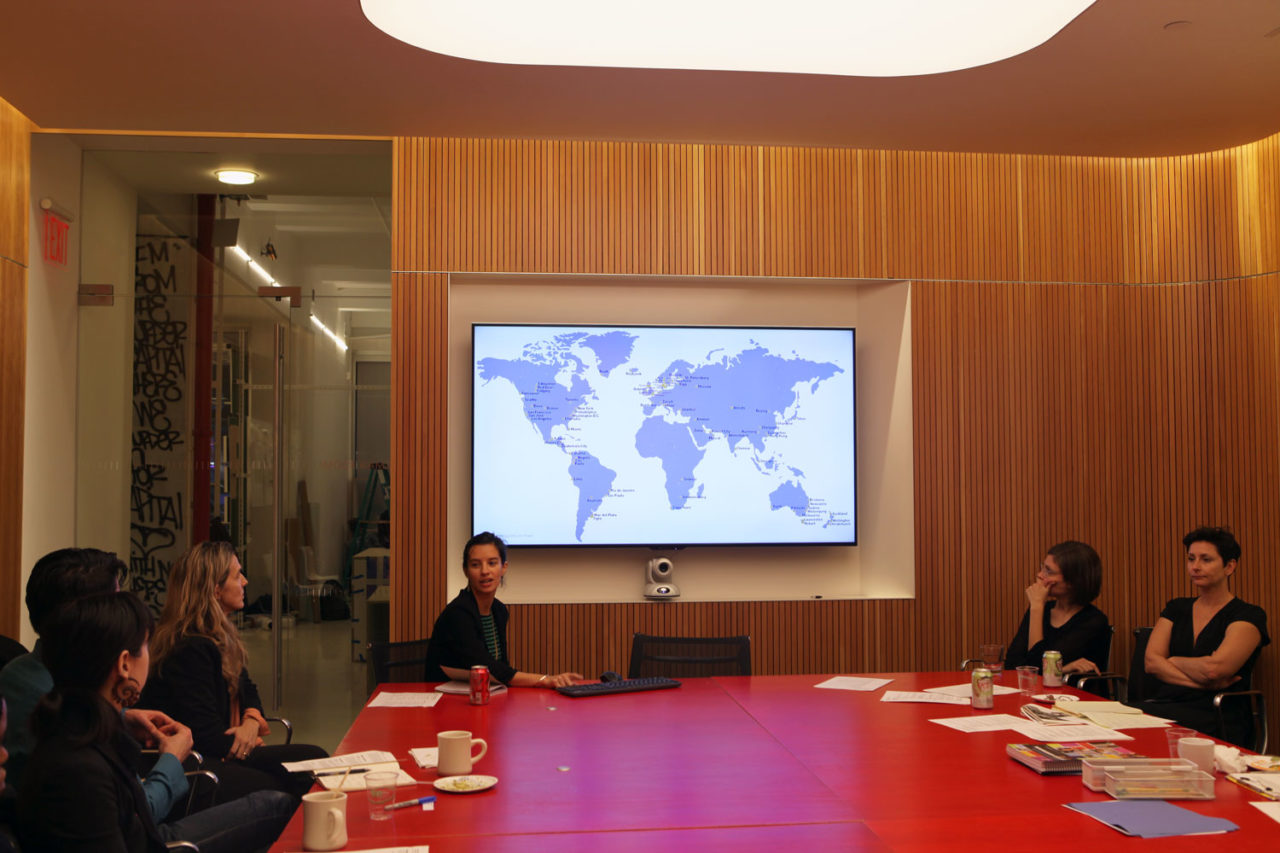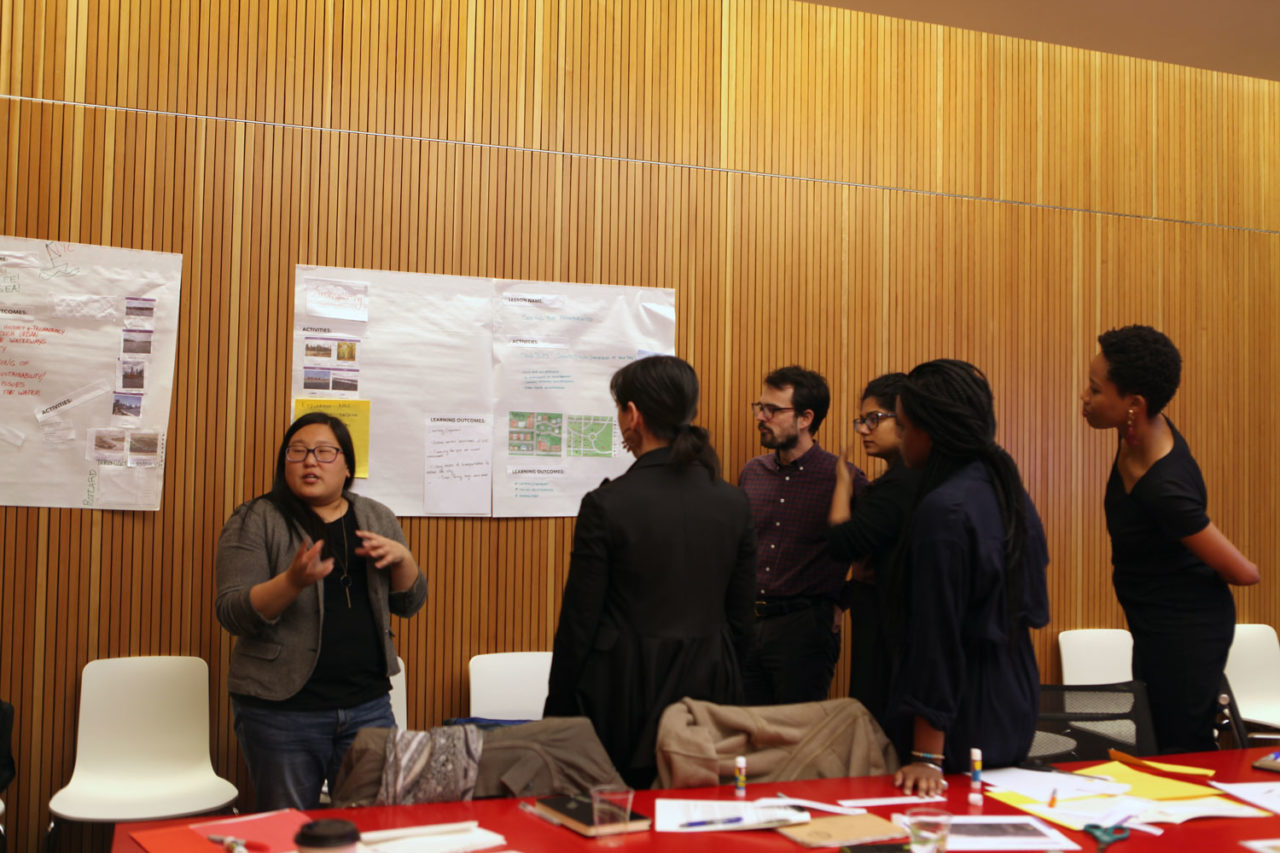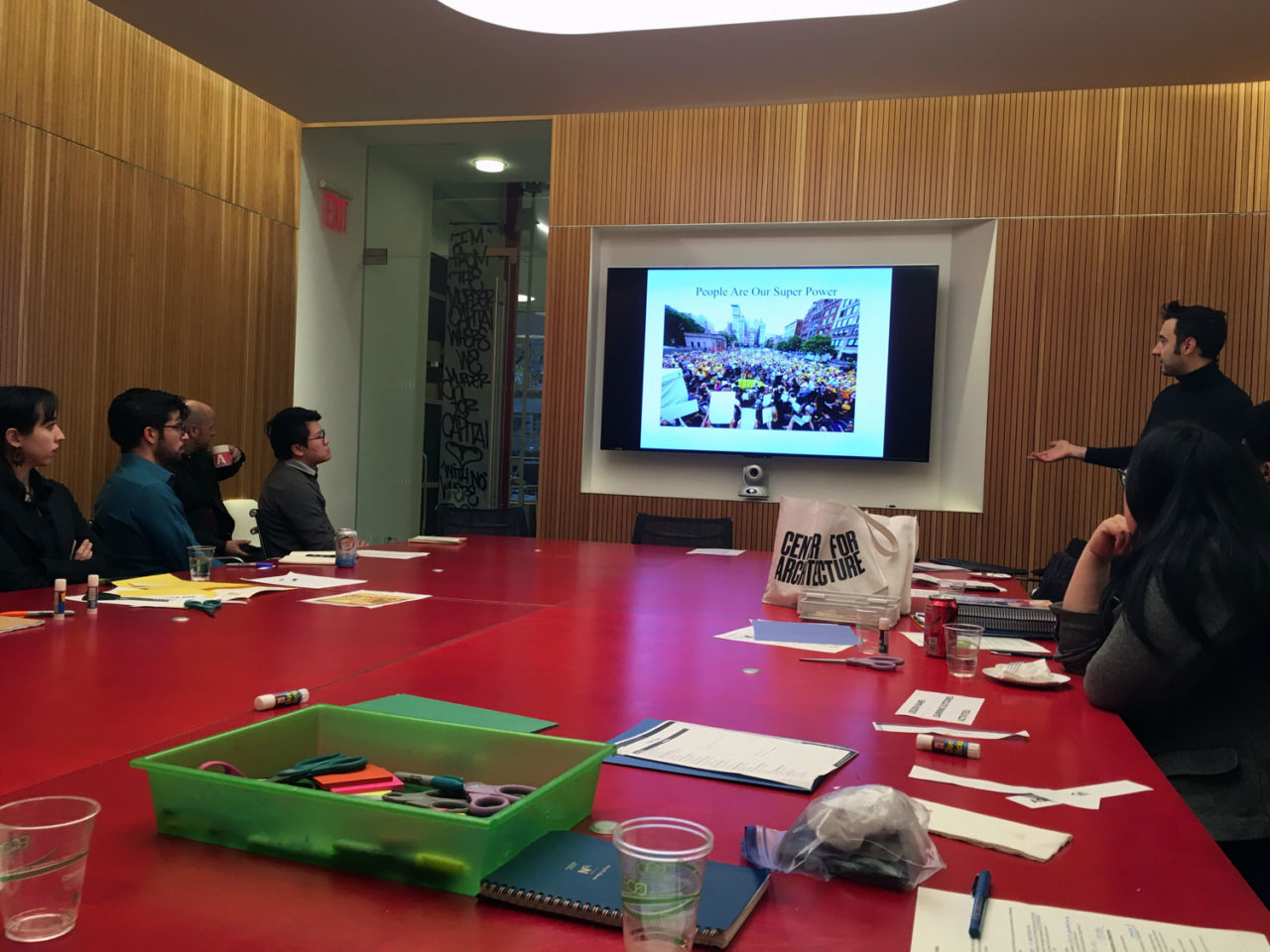by: Ofunne Oganwu and Hung Kit Yuen
On November 9, the AIANY Civic Leadership Program (CLP) discussed how learners of all ages engage with the built environment. “EDUCATION – Inside | Out,” led by Ofunne Oganwu and Hung Kit Yuen, was the last of the CLP’s five development sessions. Each development session helps build a framework for engagement in the public realm.
The day was organized into two main parts, the first a roundtable and discussion and workshop focusing on architecture inside the classroom. The CLP had the privilege to host speakers Catherine Teegarden, Director of Education at the Center for Architecture; John Widlund, Executive Director of Career and Technical Education (CTE) at the NYC Department of Education; Ibrahim Greenidge, AIA, NOMA, President of the New York Chapter of the National Organization of Minority Architects (NYCOBA | NOMA); and Nadia Lopez, Founder and Principal of the STEAM-focused public school Mott Hall Bridges Academy (MHBA). The group examined education practices that introduce young people to architecture, specifically addressing access, strategies, and outcomes. Speakers considered how the recent reauthorization of the Carl D. Perkins Career and Technical Education (CTE) Act (H.R. 2353), which legally recognized architecture as a STEM subject, might impact student learning in New York City public schools and CTE programs.
Teegarden spoke about how the K-12 department at the Center for Architecture has evolved. The program began in 1996, when volunteer architects partnered with teachers to develop classroom residencies about architecture. Program offerings now include on-site weekend family day workshops and weekday student workshops, in-class residencies, and professional workshops for teachers.
Widlund described how CTE programs, which provide equitable opportunities for students and their families, provide specialized training in an industry to foster college and career readiness. With a view to the economy, Widlund drew attention to the critical need for students to complete college, which warrants updates to existing CTE programs.
Greenidge shared insights from his personal journey. Growing-up, he bore witness to the Crown Heights Riots, discovered architecture through play, experienced college as one of very few black students to major in architecture, and started his own practice in Brooklyn. He also discussed the importance of ongoing community engagement through mentorship inside and outside of the office, especially to address issues around the underrepresentation of black architects. Greenidge shared the story of a young girl who, at an in-school NYCOBA | NOMA Project Pipeline architecture camp, was delighted to discover she could draw.
Lopez further inspired the group, describing the process of exposing her scholars to the fullest range of possibilities whilst providing encouragement and support to enable scholars to believe in themselves and achieve their dreams. “School culture must be innovative and reflect the learning of skill and exposure to industries where there is an underrepresentation by gender, race and social class,” she stated. Lopez also shared the story of how an MHBA scholar decided to pursue a career in architecture after his interest was piqued, encouraged, and supported whilst at school.
These talks concluded with a workshop called “Serious Play.” In teams, players were instructed to use collage techniques to reimagine various current NYC Department of Education K-12 curricula to include architecture in STEM. Each team was provided with some simple parameters, paper, glue, markers and scissors and asked to recompose lesson sheets to emphasize existing underlying architectural concepts.
In the interim, the group heard from Thomas DeVito, Senior Director of Advocacy at Transportation Alternatives (TransAlt). TransAlt advocates for better public transit, especially cycling and walking routes in New York City. DeVito highlighted the importance of strategic advocacy when championing a cause. He also provided clear insight on best practices to receive the endorsement of decision-makers, from developing a campaign plan to selecting the right decision-maker and making the request. From this presentation, the CLP group learned much about the power of coalition.
The second part of the program focused on how architecture and education can come together beyond the classroom. Considering that, in New York City, pedestrianized streets and urban plazas are increasingly programed to facilitate exhibitions, debates, pop-up stores, yoga classes, and more, the group examined how public spaces can provide continuing education on topics including art, politics, commerce, health, and culture. To understand how to make public space a more safe and pleasant environment for public education, the CLP hosted four experts who champion the public realm from policy, operations, programming and design perspectives: Emily Weidenhof, Director of Public Space at the NYC of Transportation (DOT); Alexandria Sica, Executive Director of Dumbo Business Improvement District (Dumbo BID); Leslie Davol, Co-Founder & Executive Director of The Uni Project and Street Lab; and Julia Day, Associate at Gehl Architects.
Weidenhof started the discussion by introducing DOT initiatives that turn underutilized spaces on the streets into public space. The department’s 10-year-old NYC Plaza Program has created over 70 new pedestrian-friendly plazas all over the city. Sica showcased how Dumbo BID has worked to to foster a sense of community in its public space, from organizing events and concerts, commissioning public art, and keeping the streets clean and well-maintained. Davol shared her experience developing The Uni Project, which programs public spaces with pop-up reading rooms and arts studios using deployable, case-inspired installations designed by architects. Finally, Day presented the social and psychological aspects of public space design. Using survey results on the NYC Plaza Program as an example, she illustrated both qualitatively and quantitatively how human-centered public space design can have immense benefits such as increased time spent outdoors and increased feelings of ownership and perception of safety. Together, the group discussed strategies for programming at different scales, from ensuring public safety to the inclusion of phone chargers in street furniture. Weidenhof concluded the discussion by emphasizing the importance of quality over quantity with regards to public space making. She stressed that creating successful public spaces requires a careful vetting of location and the careful consideration of various elements such as traffic, safety, and business opportunities.
This intense and thoughtful day provided the group with various ways to think about architecture and education, showcasing what architecture and design professionals can do to improve the quality of education for all. Educating young people about architecture and design can open up possibilities. It also promotes the value of architecture, and can help draw more diverse candidates to professions in the built environment.











